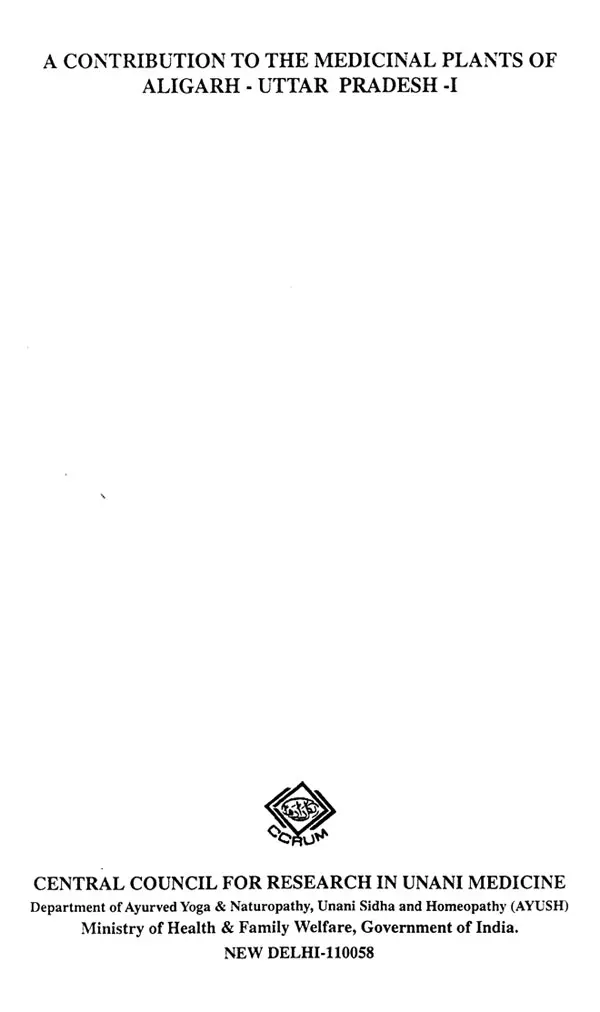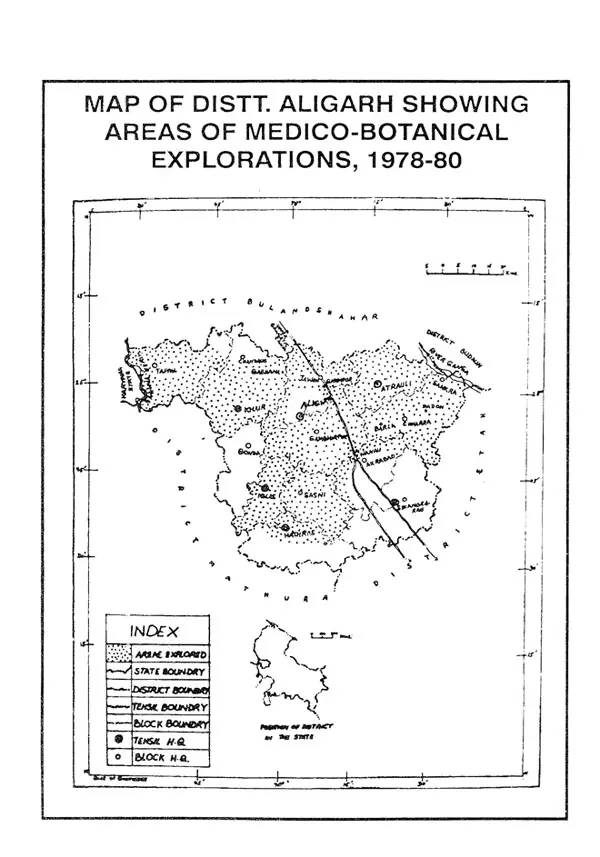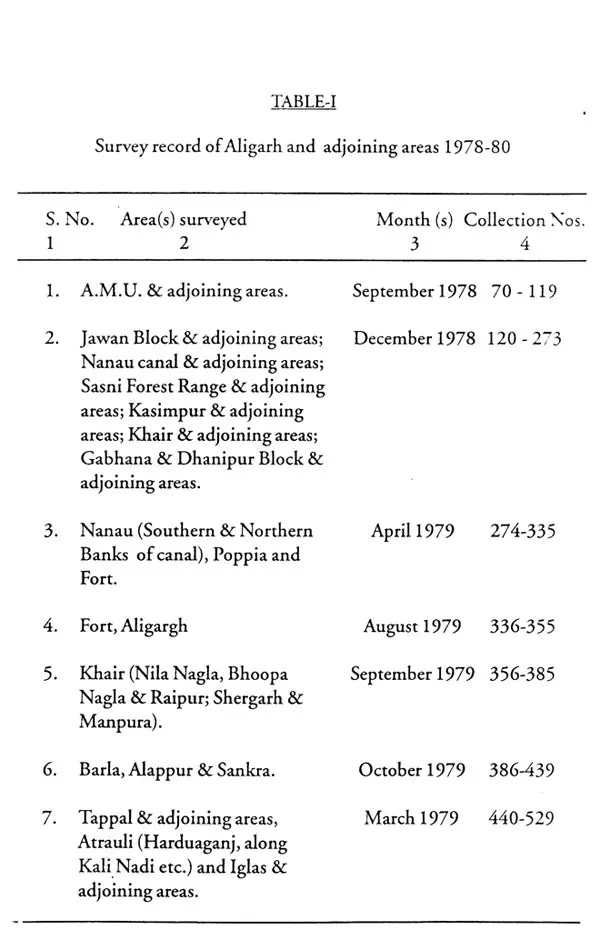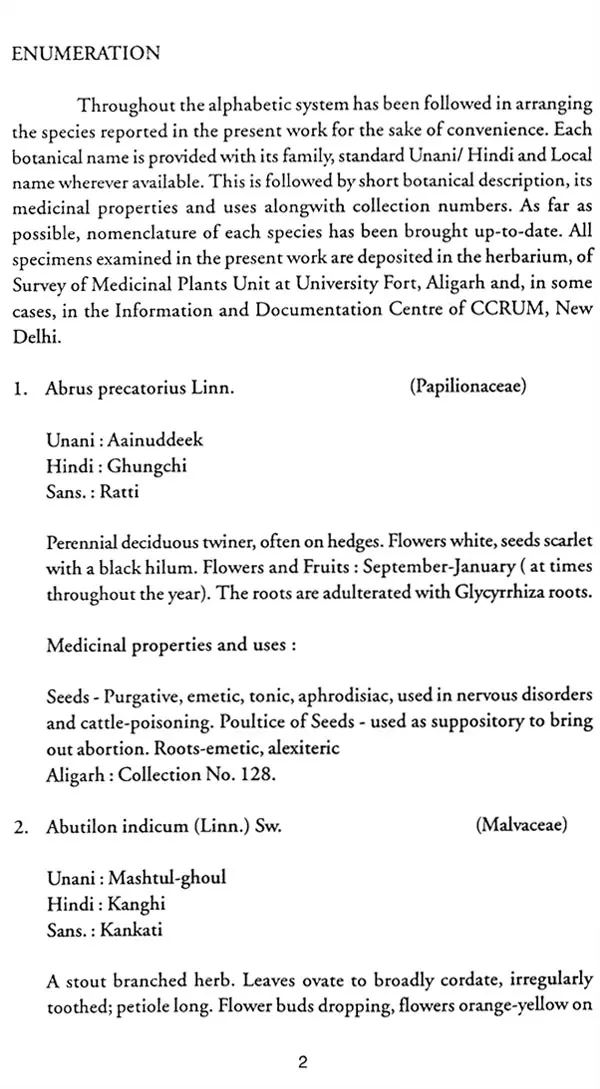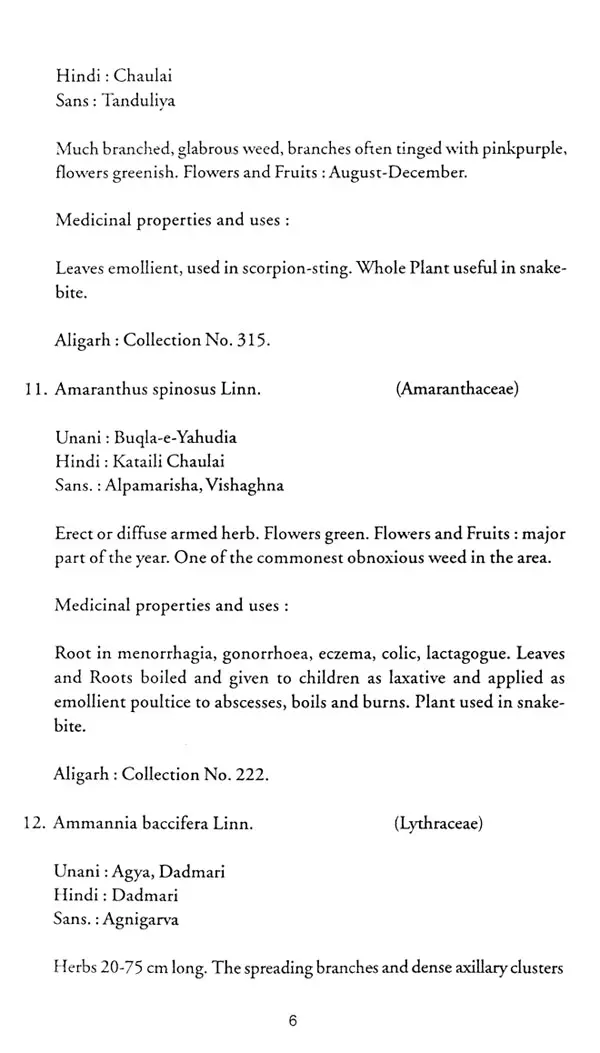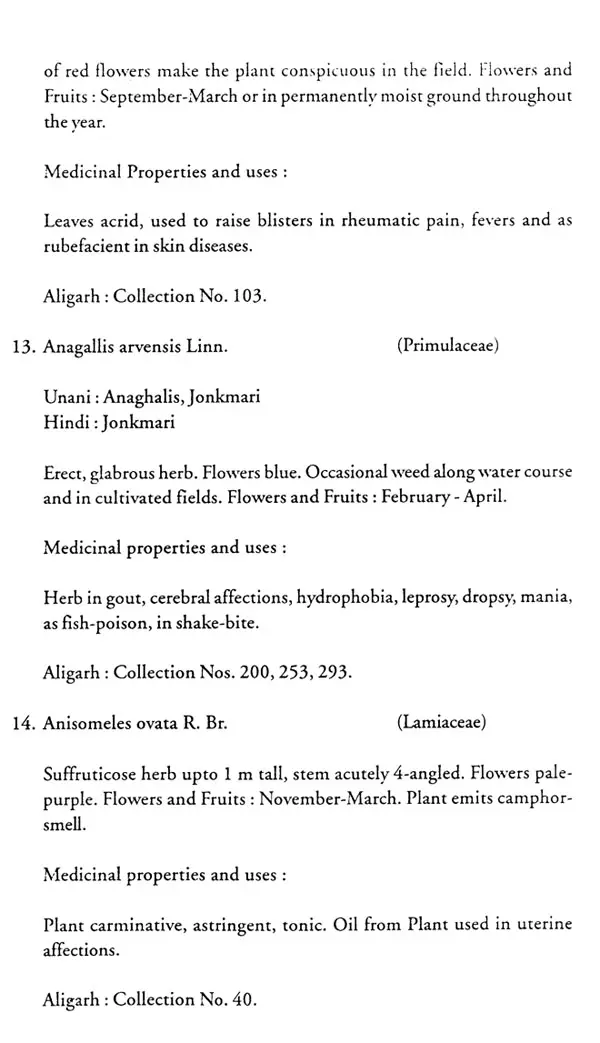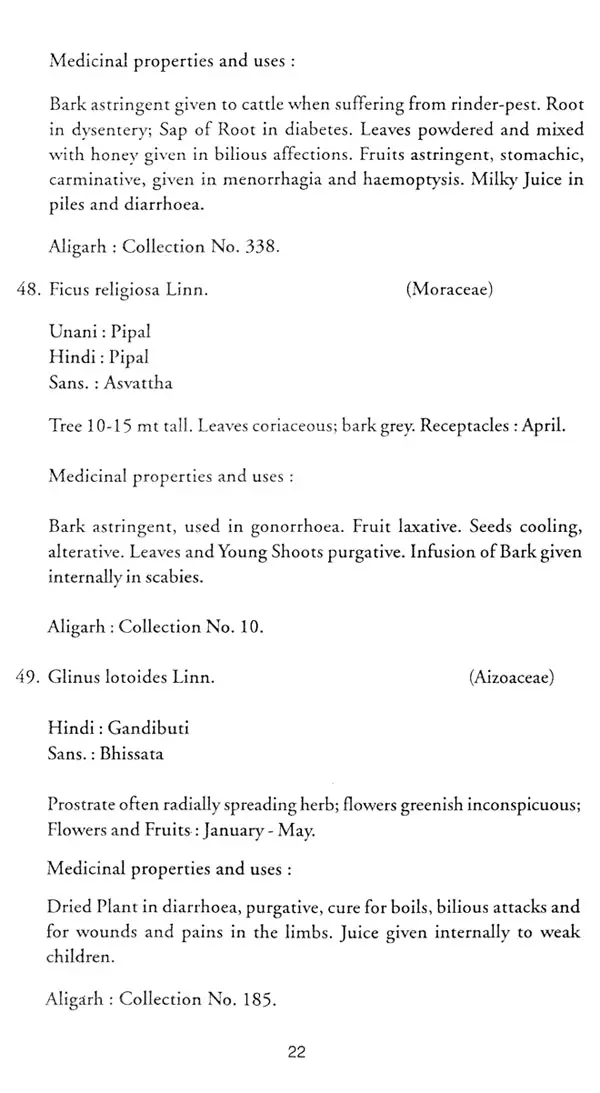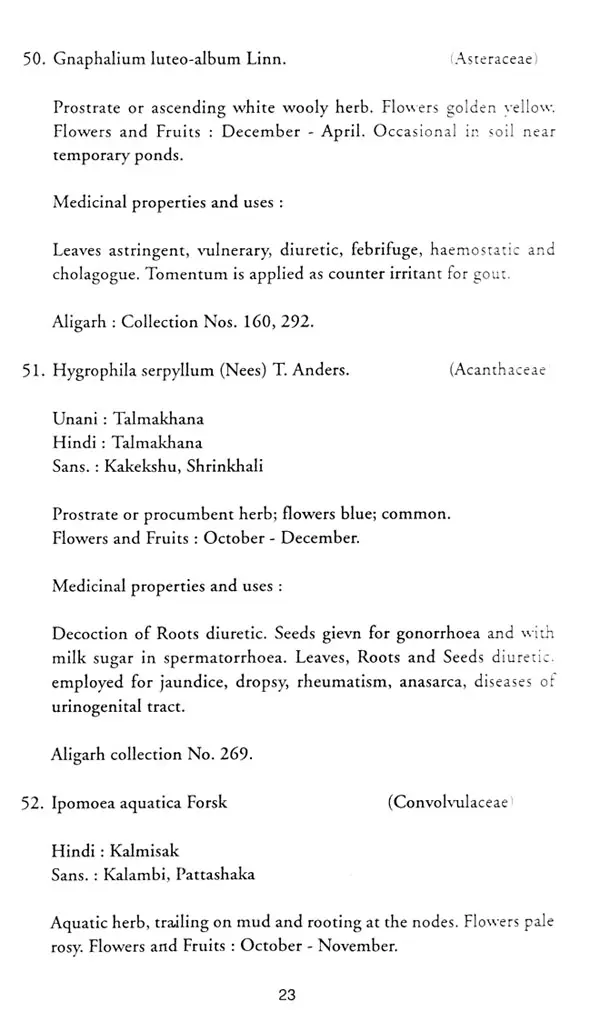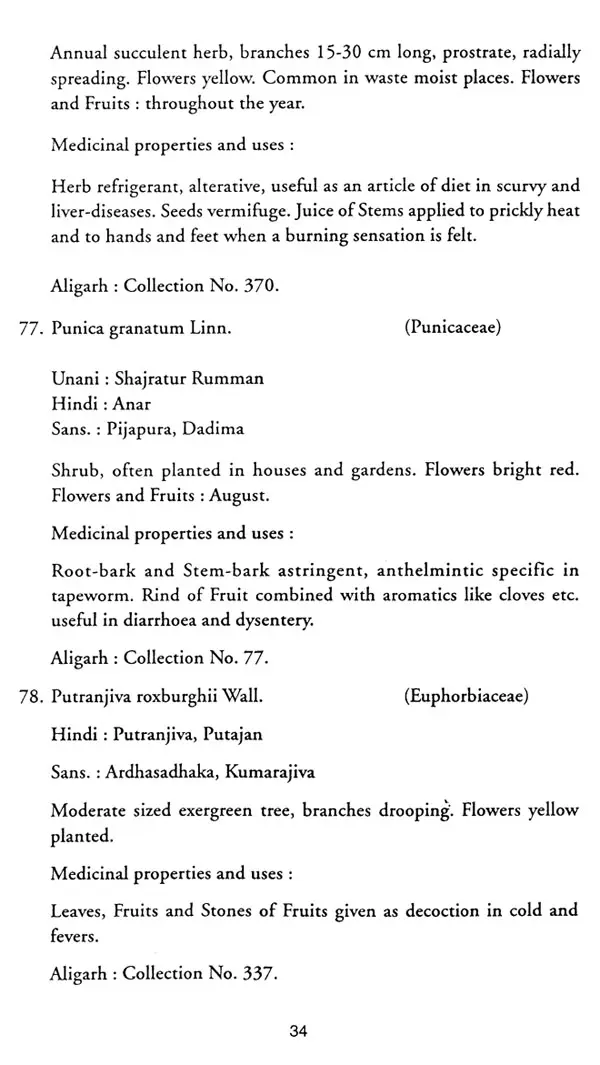
Contribution To The Medicinal Plants of Aligarh - Uttar Pradesh-I
Book Specification
| Item Code: | UBC900 |
| Publisher: | Central Council for Research in Unani Medicine, Delhi |
| Language: | English |
| Edition: | 2004 |
| Pages: | 45 |
| Cover: | PAPERBACK |
| Other Details | 9.50 X 6.30 inch |
| Weight | 110 gm |
Book Description
Forest have been a source of invaluable medicinal plant since the time man realized the preventive and curative properties of plant and started using them for human health cove. About 80% of world's population depends on plants traditional forms of medicinal for meeting their primary health materials.
Indian systems of medicine namely, Ayurveda, Unani and Siddha have evolved over hundred of years. Folk and tribal system of traditional medicine is equally important 90% of medicinal flora occurs in forests. However, more than 70% collection from forest involves destructive harvesting. Consequently, there is a threat to the genetic stock and bio-diversity. With a view to avoiding adulteration in the drugs are obtained, there is an urgent needs for systematic work on plants from which these drugs are obtained in different parts of the country. The Council attaches great importance to this aspect and a programme of survey of medicinal plant in different agro-climatic regions of the country has been launched since 1978.
The present work entitled "A contribution to the Medicinal Plant of Aligarh, Uttar Pradesh - I" carried out by the survey of medicinal plants Unit, Aligarh, under the aegis of this Council, is an effort in the direction of exploration of medicinal flora of this country, It enumerates 100 taxa of medicinal of this area giving information on their botanical description, Unani/ Hindi/Sanskrit names, flowering and fruiting seasons, medicinal properties and used drug in fairly lucid and concise from. A team of comprising Dr. V.K. Singh, Survey Officer and Mr. M.A. Khan, had accomplished this task. It is hoped this attempt will prove a right step in this direction and the work will be found useful by the scientists as well as pharmaceutical industry.
Floristic survey in the country was initiated for the first time by Sir Joseph Hooker (1872-97). Later, workers like Duthie (5), Prain (13), Cooke (4), Haines (8) and Gamble (7), have added voluminous literature regarding the plants that exist in the Indian sub-continent. However, the information regarding their medicinal use was not emphasised in any of these works. The Unani and Ayurvedic systems have been practised in this country for centuries yet the exact identity of the plants the respective physicians used for curing the diseases, was fully established for some and not for all plant-drugs. In such a situation, a few drugs were highly effective for curing certain ailments and in other cases response was negligible. An attempt was made by Kirtika & Basu and Chopra et al. in thirties and fifties of this century to compile information regarding drug yielding plants. Their efforts resulted in publication of Indian Medicinal Plants (1935) and Glossary of Indian Medicinal Plants (1956). With the advancement of sciences of plant chemistry and biochemistry in Europe and U.S.A., scientists' interest was revived and large number of plant-drugs have been added to U.S. Pharmacopoeia from 1940 onwards. In 1965, at least 55 out of 200 most frequently prescribed products in U.S.A. had one or more plant constituents [Jain (9)]. This indicates that plants will not only remain but regain importance in medicine [Farnsworth (6)].
